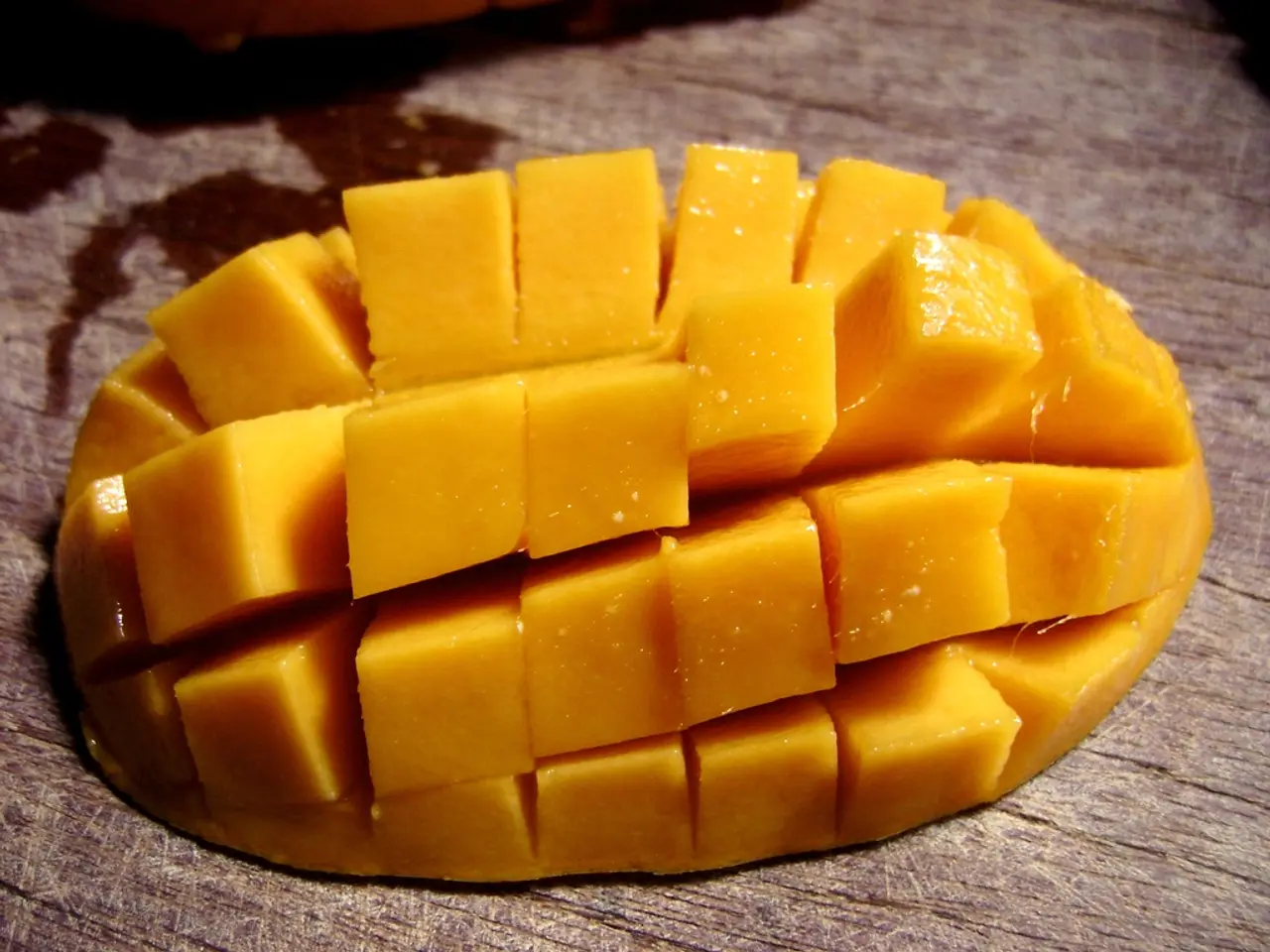Transforming Your Mango Farm into a Lucrative Business Enterprise: Smarter Approaches
Published on November 26, 2024
Mango farming can be a lucrative business, but achieving long-term growth and profitability requires strategic planning and smart farming practices. Here are some strategies that can help mango farmers thrive in today's competitive market.
Optimizing Mango Cultivation for Higher Yields and Quality
Adopting modern farming methods can significantly increase mango farm productivity and improve fruit quality. One such method is the Ultra High-Density Mango Plantation (UHDMP), which has shown promising results in regions like Barind, Bangladesh, by doubling production per hectare, even in water-stressed conditions [1].
Pre- and post-harvest fruit bagging is another effective technique for protecting mangoes from climate-related stress and pests, improving fruit quality, and reducing damage [4]. Enhancing soil fertility through composting, using a 2:1:1 ratio of mango prunings, manure, and crop residues, also plays a crucial role in improving tree health and fruit quality [3]. Advanced post-harvest treatments, such as aqueous ozonation, can help maintain sweetness during storage, thereby enhancing fruit quality for extended storage or export [2].
Leveraging Precision Agriculture Technologies
Precision farming tools, including satellite imagery, drones, IoT sensors, AI analytics, and farm management software, can help monitor crop health, soil moisture, pest presence, and climate factors. These tools improve yield prediction, optimize water and fertilizer use, and increase operational efficiency by 10–40% depending on the technology [5]. Drones and IoT sensors can also facilitate targeted spraying and real-time monitoring, reducing overuse of resources and lowering the environmental impact while increasing productivity [5].
Expanding Product Offerings
Diversifying income streams is essential for long-term profitability in mango farming. Introducing value-added products like dried mango slices, mango pulp, juices, and jams can help farmers capture new markets and increase profits. Export-quality fruit production can also be pursued by adopting proper post-harvest handling, storage, and packaging methods [2]. Consider intercropping or agroforestry systems compatible with UHDMP to produce complementary products and improve land-use efficiency.
Building Strong Local Partnerships to Boost Sales
Collaborating with local cooperatives and farmer groups can provide a platform for sharing knowledge, pooling resources, and improving bargaining power. Partnering with local processing units to convert mango surplus into processed products can increase value capture. Establishing direct marketing channels, such as farmer markets, local retailers, or farm-to-consumer sales, can help build customer trust and improve margins. Utilizing blockchain traceability systems can assure quality and build consumer confidence, enhancing transparency and enabling premium pricing [5].
Forming partnerships with nearby restaurants, food processors, and juice makers can help sell value-added mango goods. Selling directly to local markets, grocery shops, and wholesalers can help increase sales of fresh mangoes.
A successful mango farm requires ongoing improvement and smart planning to remain profitable in the long run. To make the most of the mango farm land, consider selling different types of fruits and vegetables in addition to mangoes. Adding a variety of mango fruits can increase profits by selling goods with longer shelf lives, such as mango pulp, juice, dried mango, and mango pickles.
Optimizing mango farm land involves managing soil and water effectively, using drip irrigation, and conducting regular soil tests. Pest and disease management is crucial for improving fruit quality and crop production. Pruning and proper tree spacing can enhance airflow and light exposure, leading to higher-quality mangoes.
Utilizing digital marketing and social media can help reach more customers and improve the mango farm's image in the community. A successful mango farm requires a good business plan and knowledge of the market. While UHDMP and precision agriculture technologies offer significant advantages, their successful implementation may require initial investment, training, and adaptation to local conditions. Climatic variability must also be managed through sustainable practices like fruit bagging and organic soil amendment [1][3][4][5].
- To expand the business and improve longevity, a mango farmer might consider selling various food-and-drink products derived from mangoes, such as dried mango slices, mango pulp, juices, and jams, in addition to fresh mangoes.
- Embracing precision agriculture technologies, like satellite imagery, drones, IoT sensors, AI analytics, and farm management software, can help mango farmers achieve better yields and higher quality fruit by optimizing water and fertilizer use, improving climate monitoring, and increasing operational efficiency.
- Leveraging home-and-garden concepts in mango farming, intercropping or agroforestry systems compatible with Ultra High-Density Mango Plantation (UHDMP) can help increase land-use efficiency and produce additional complementary products, contributing to diversified income streams and long-term profitability.








